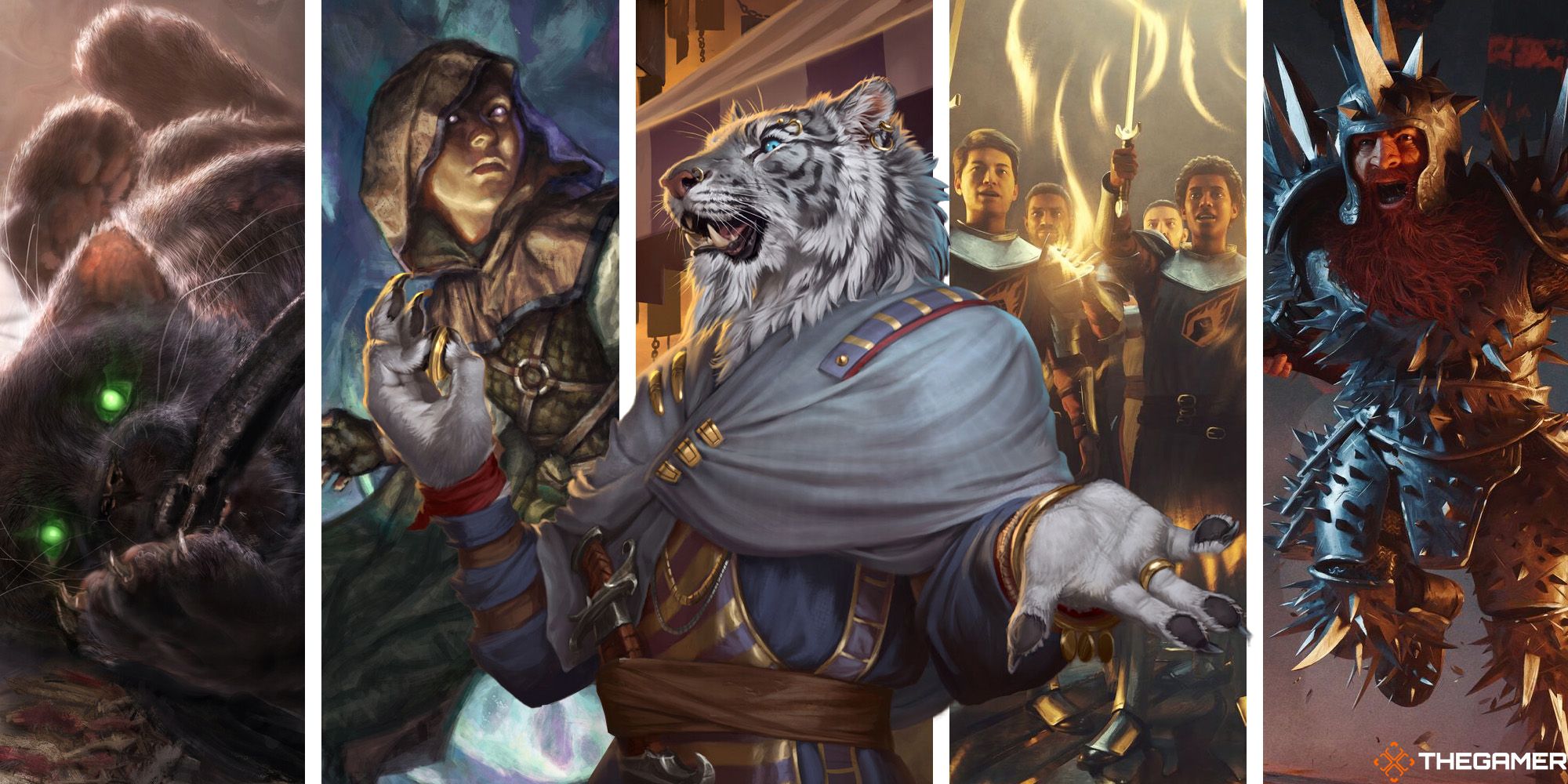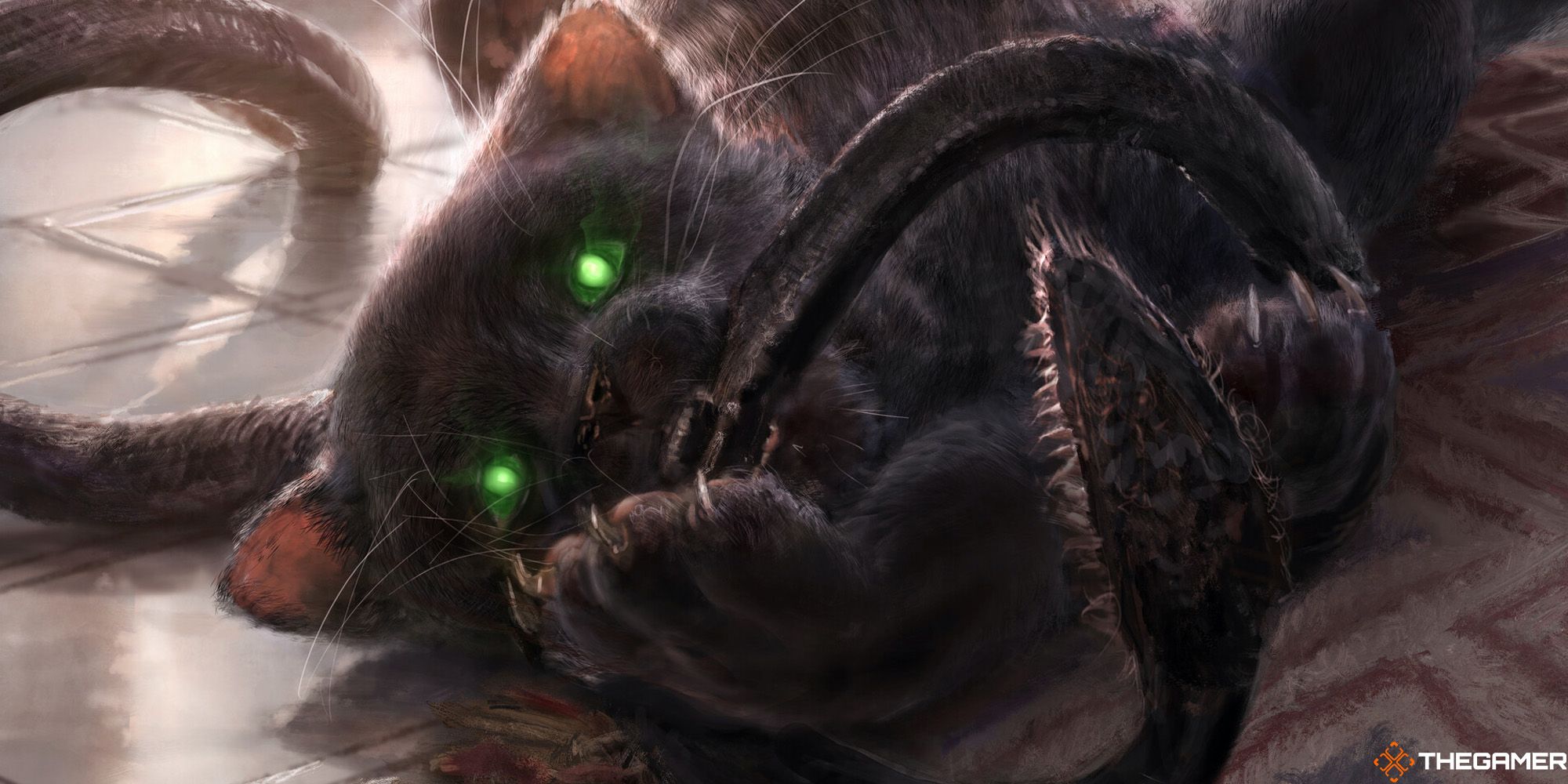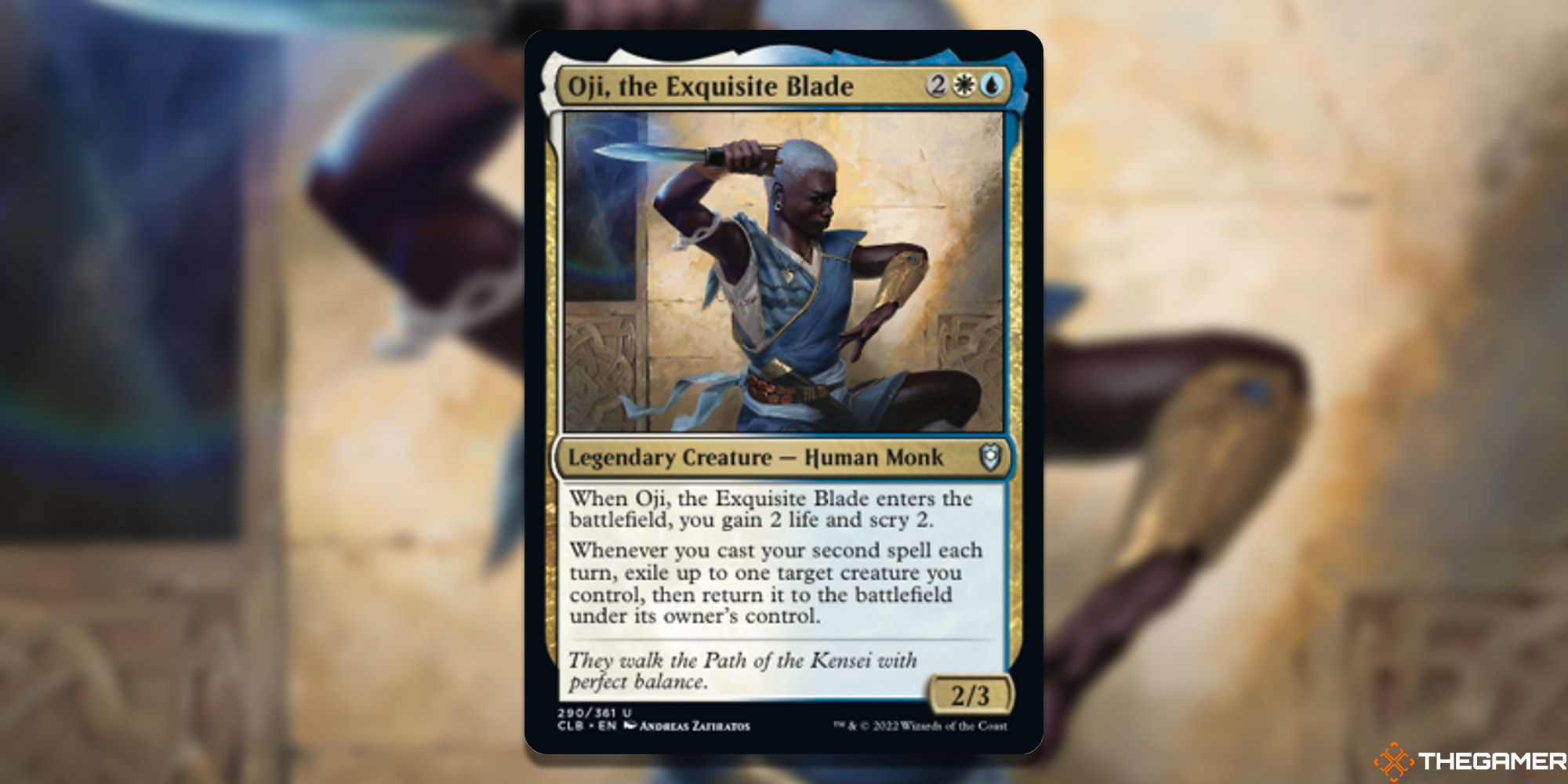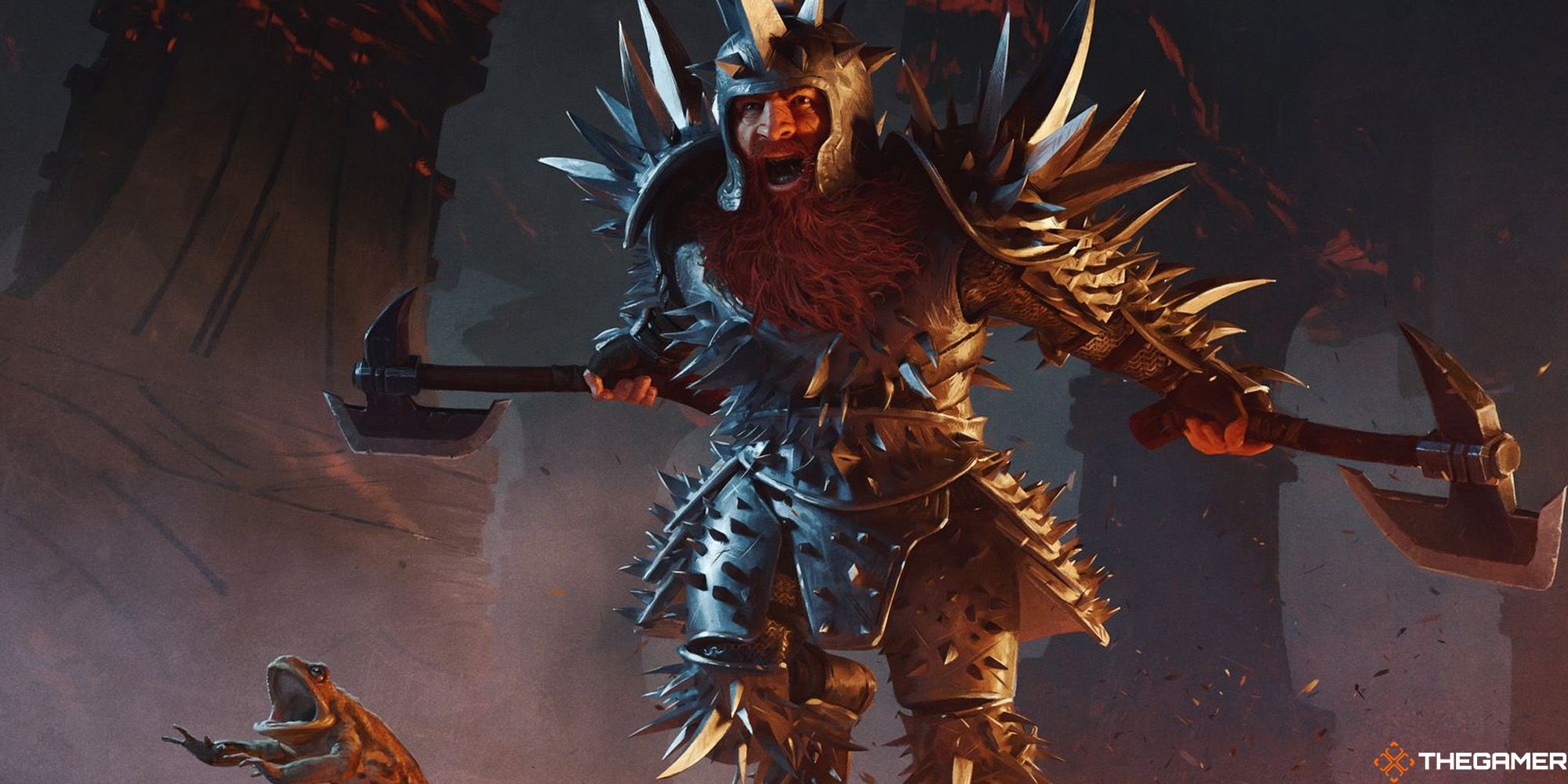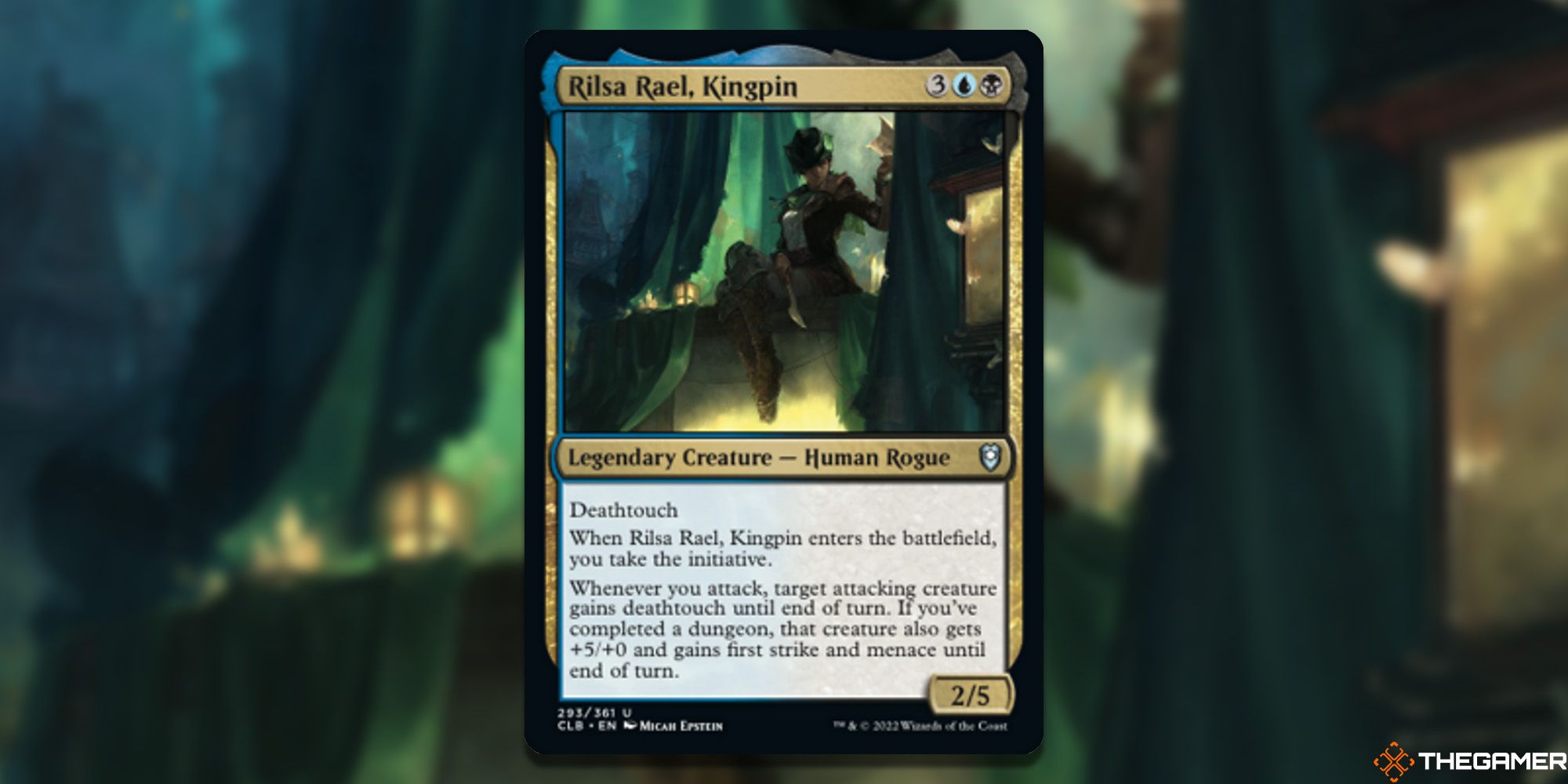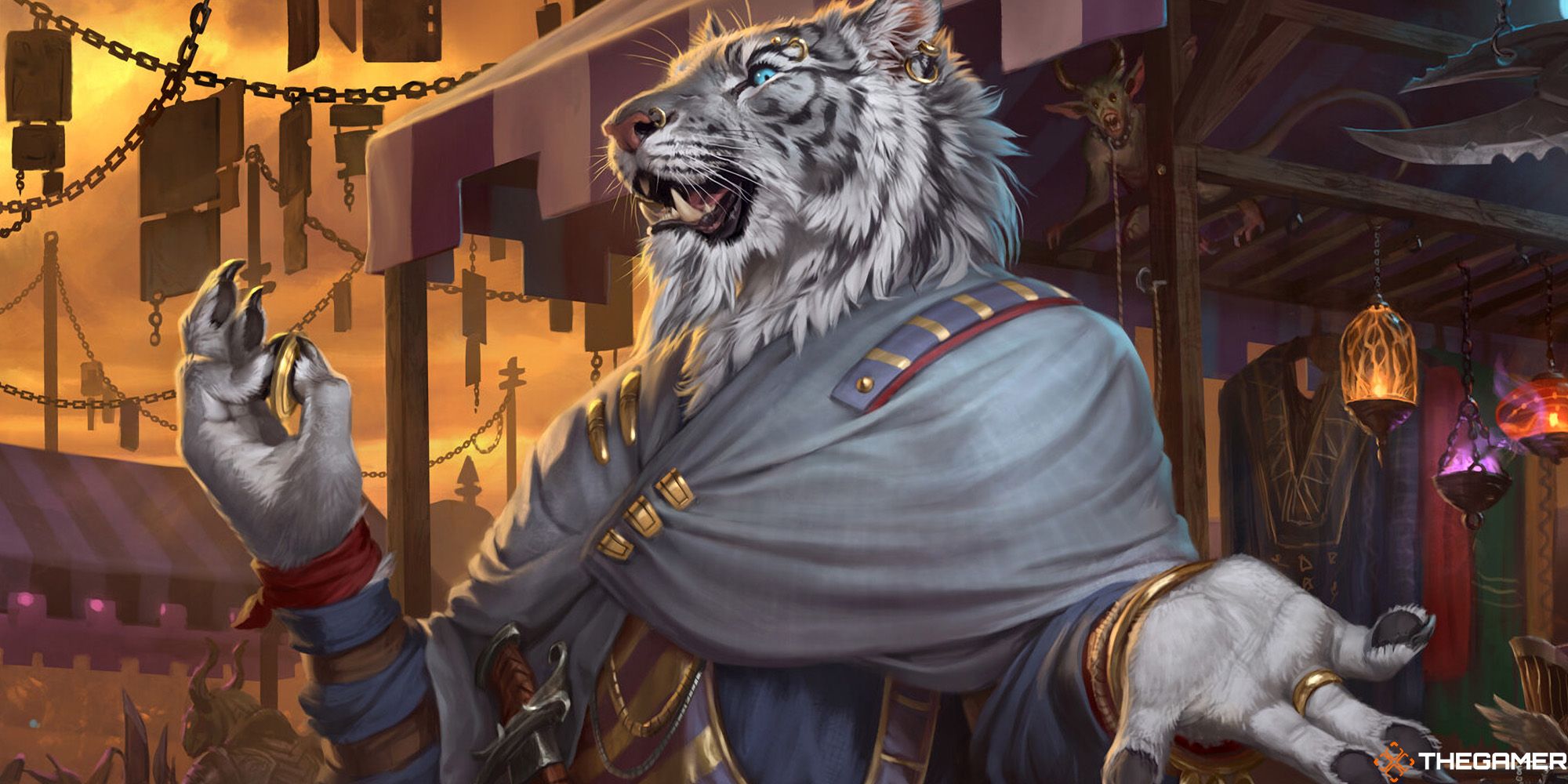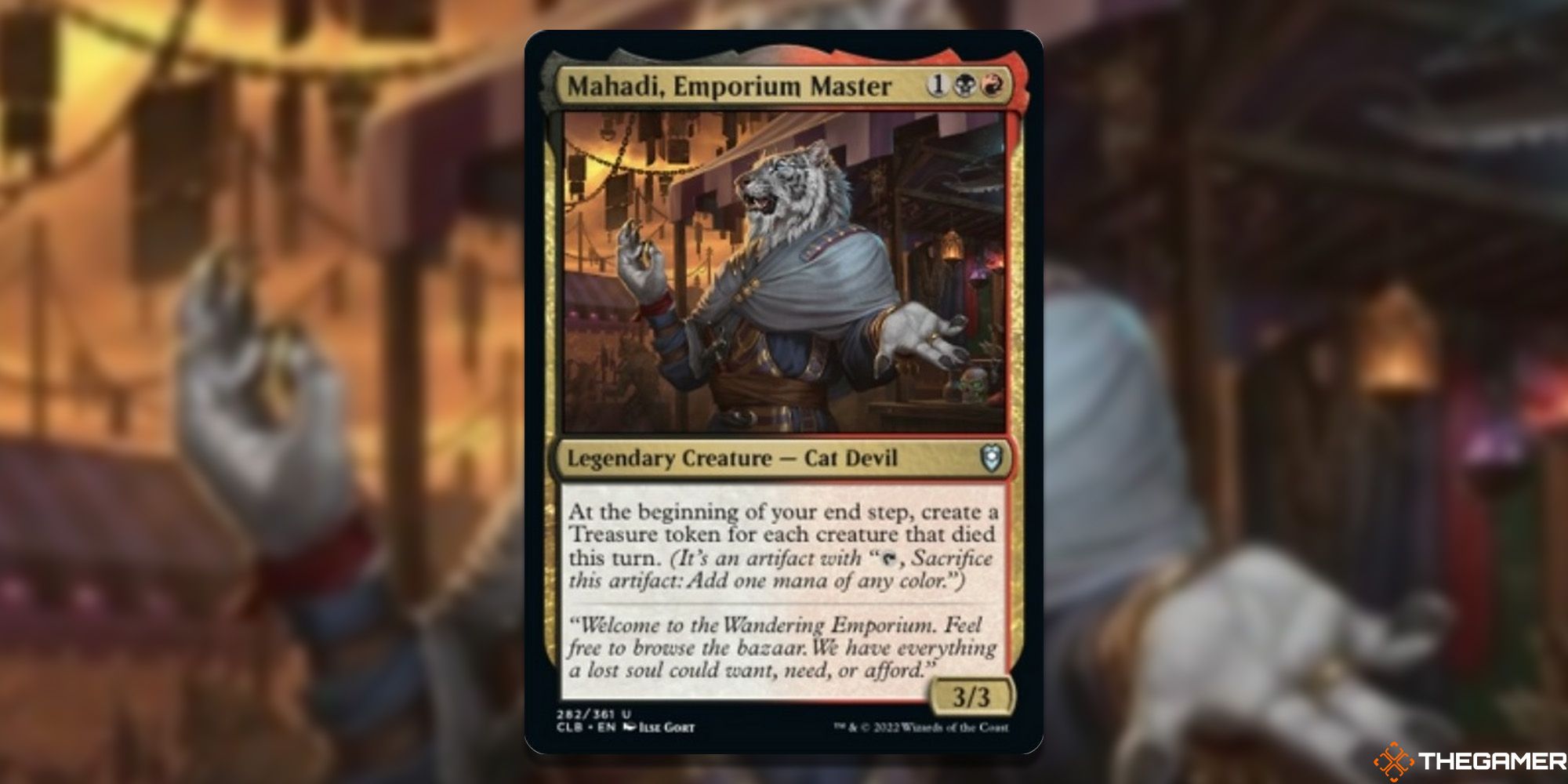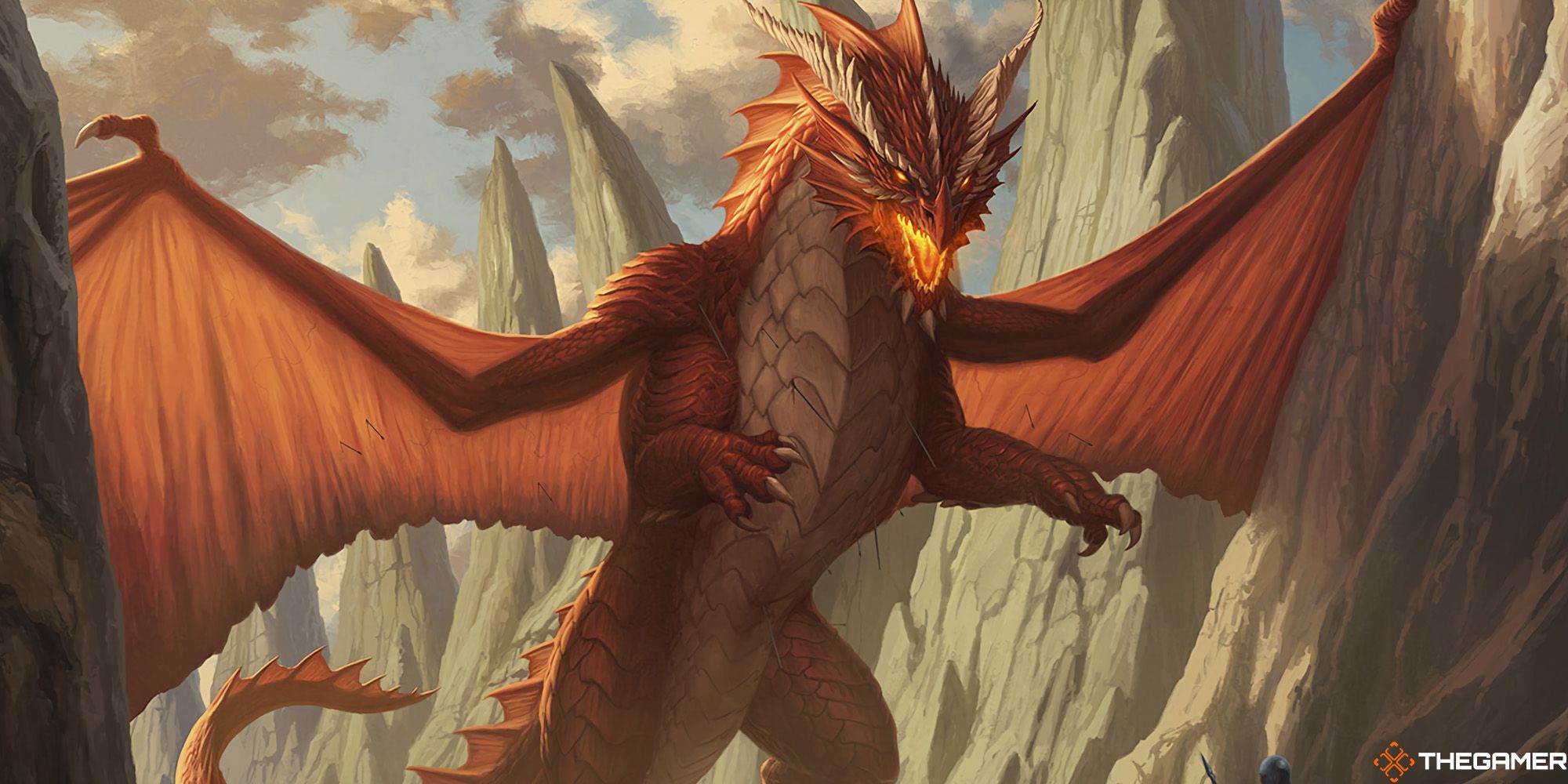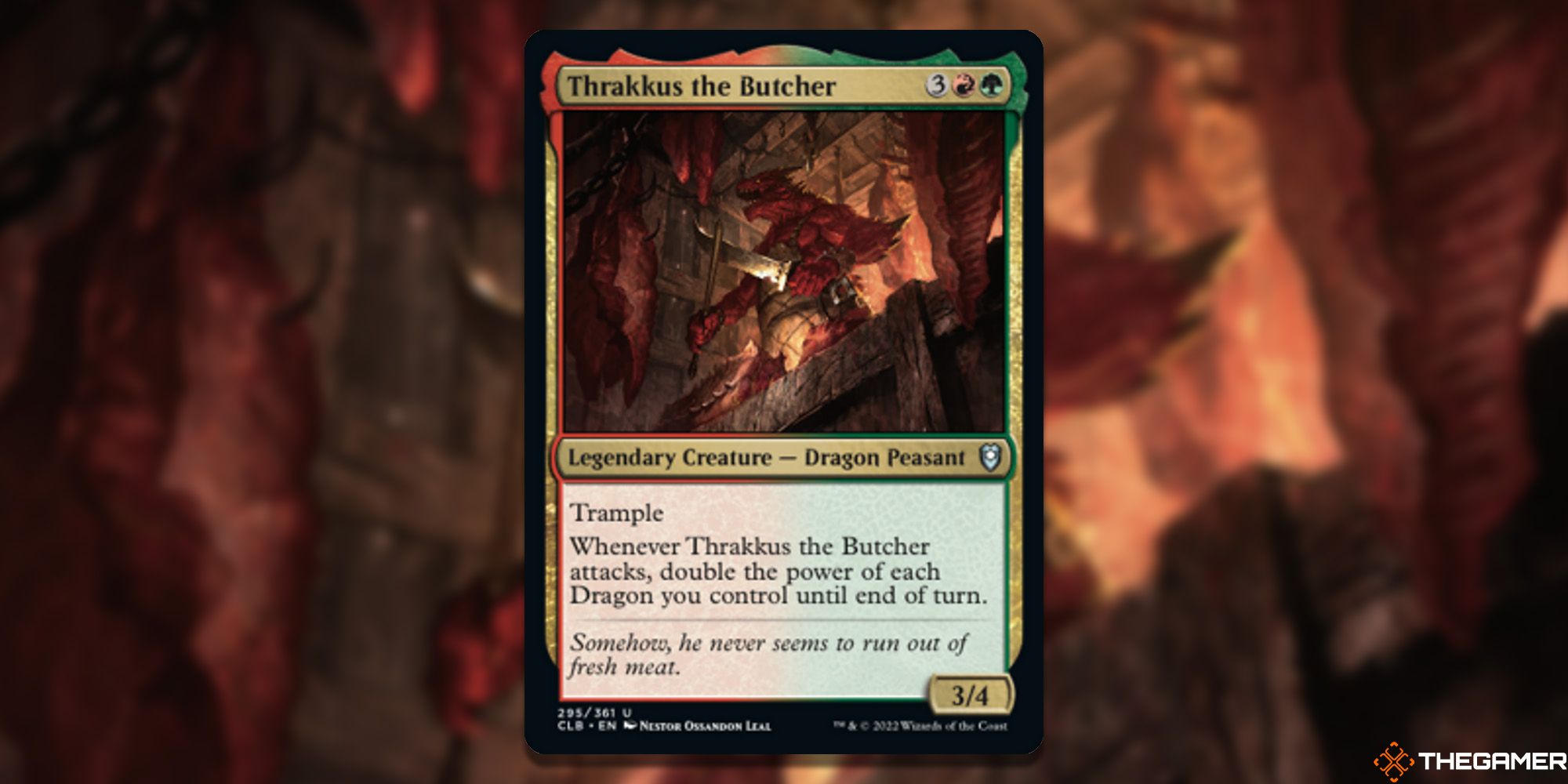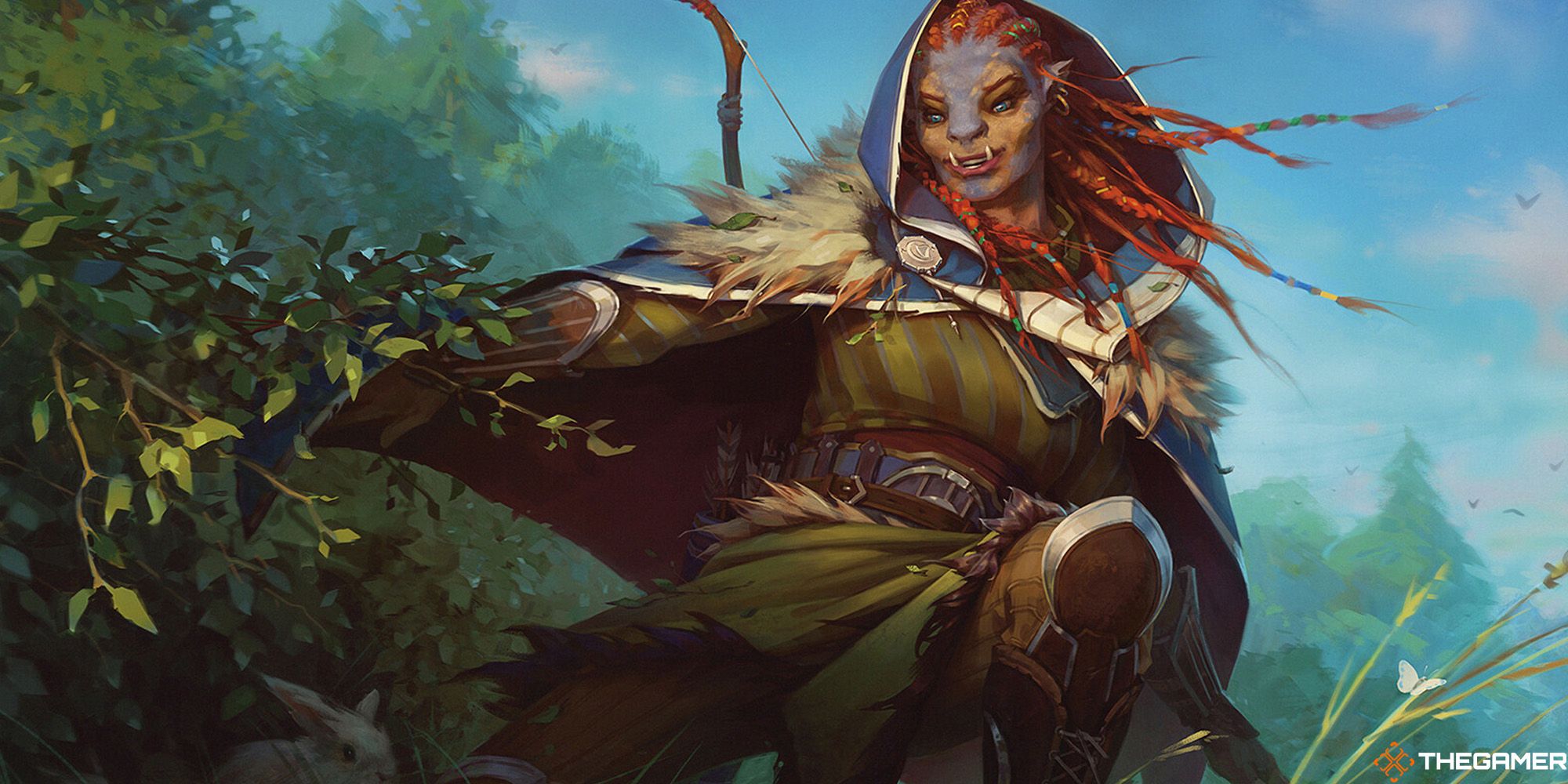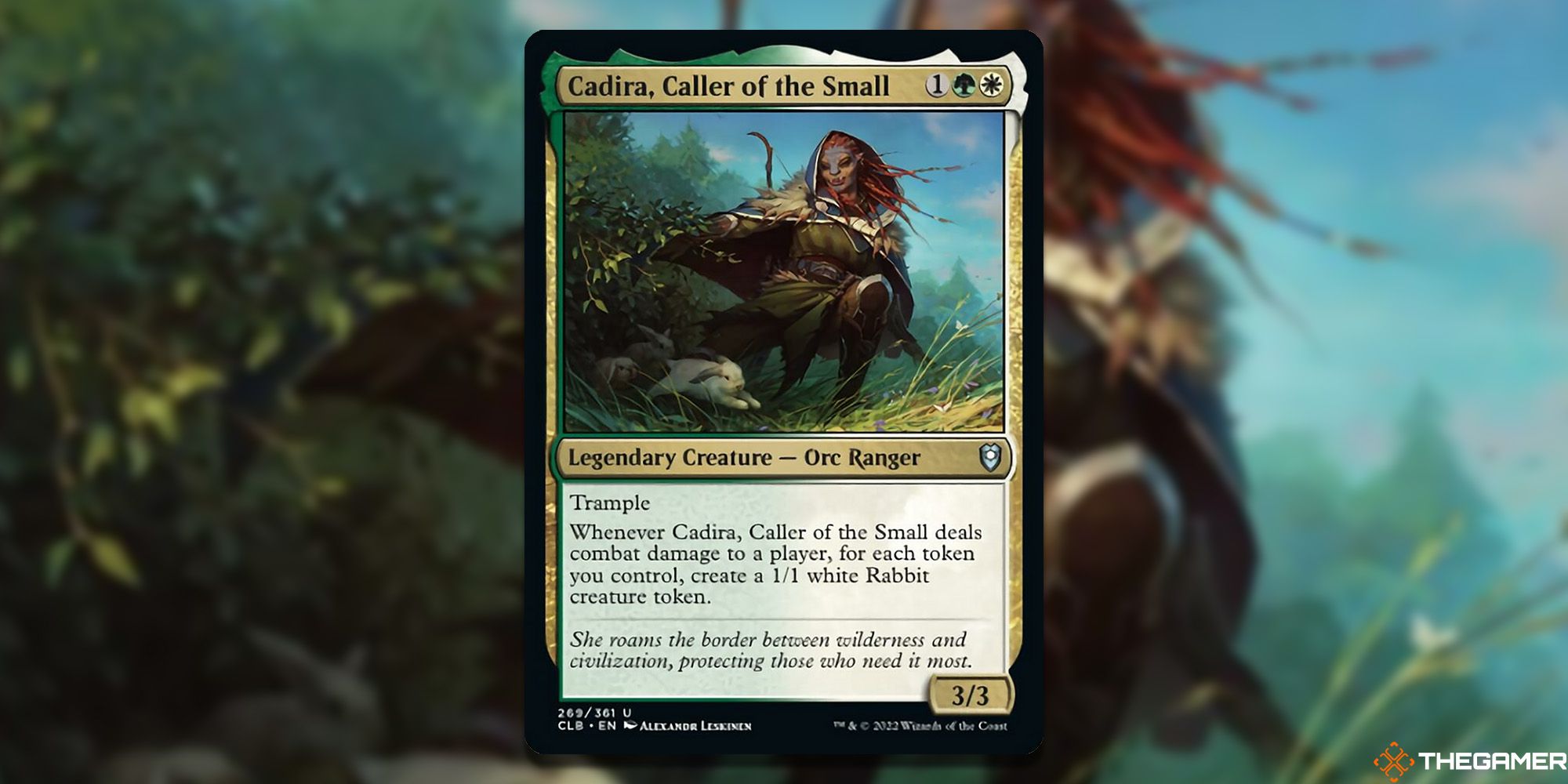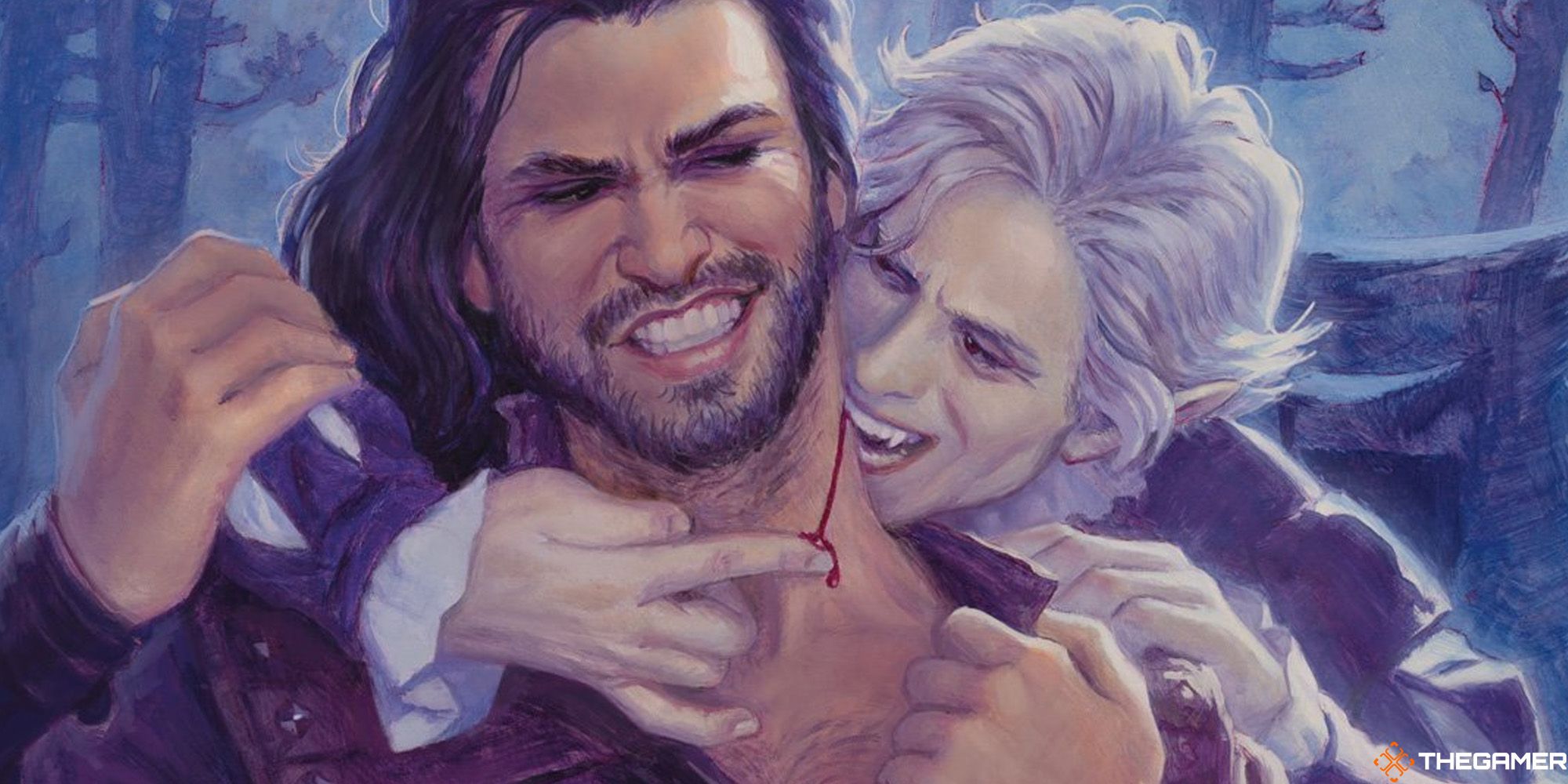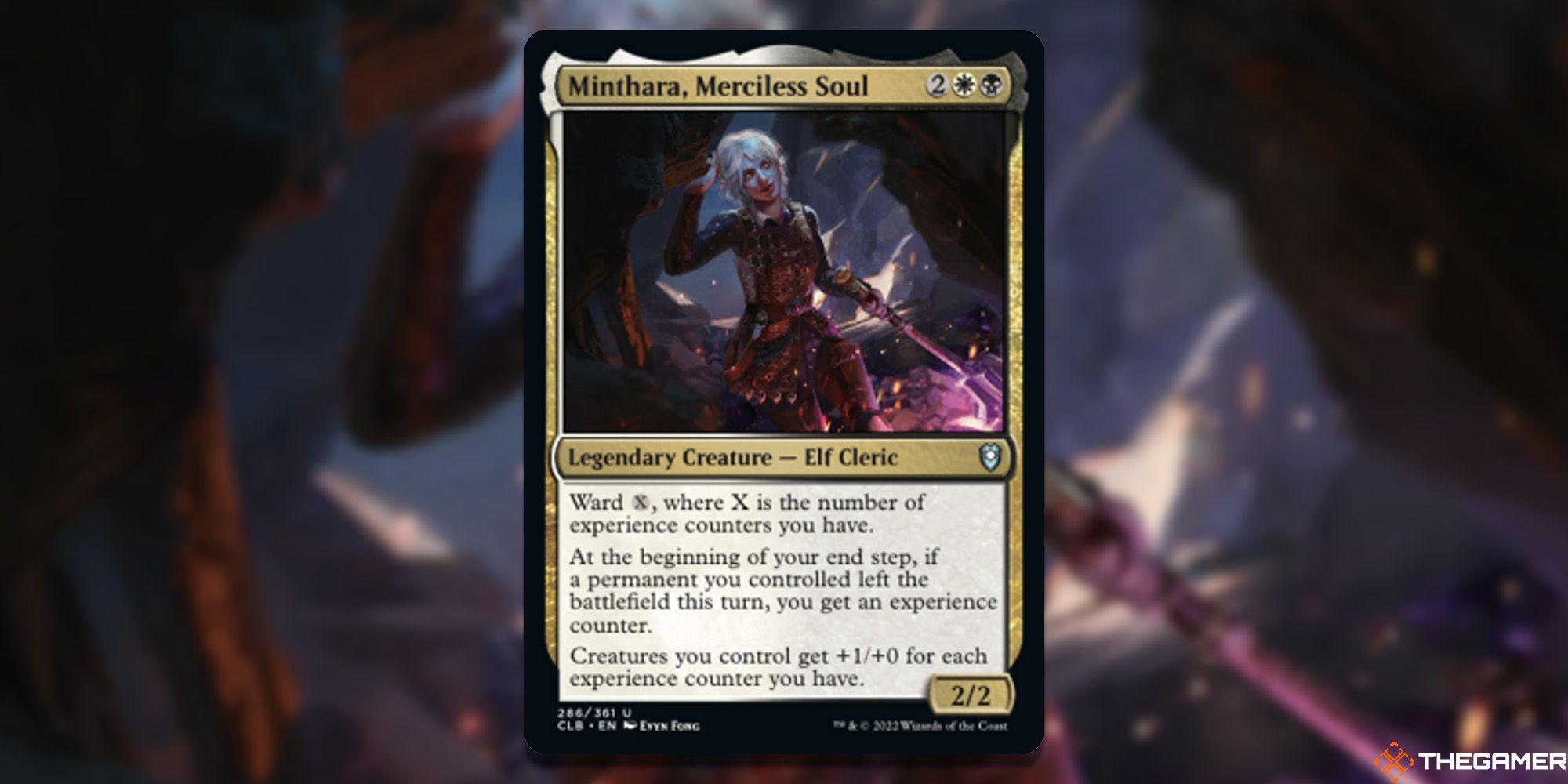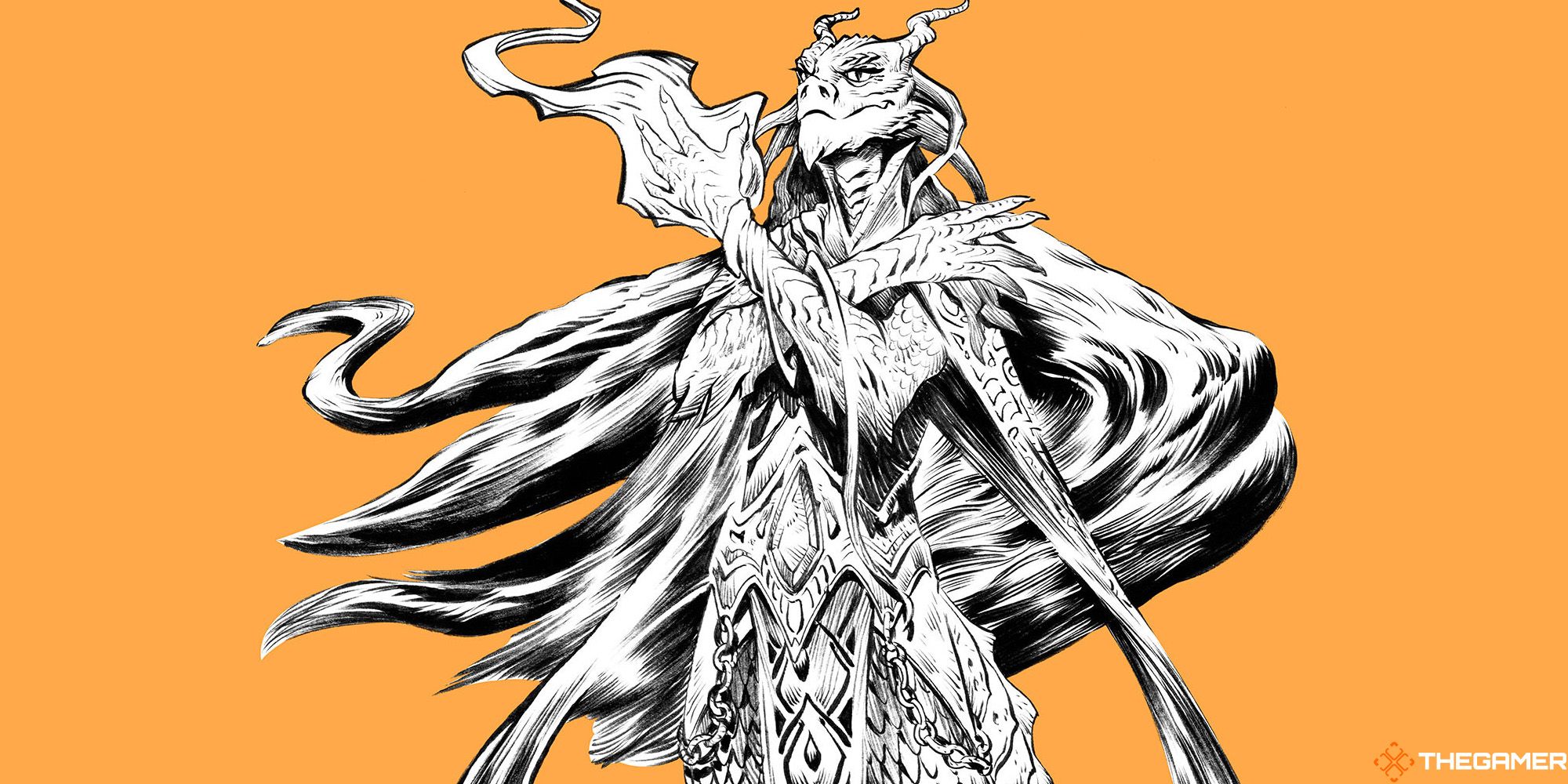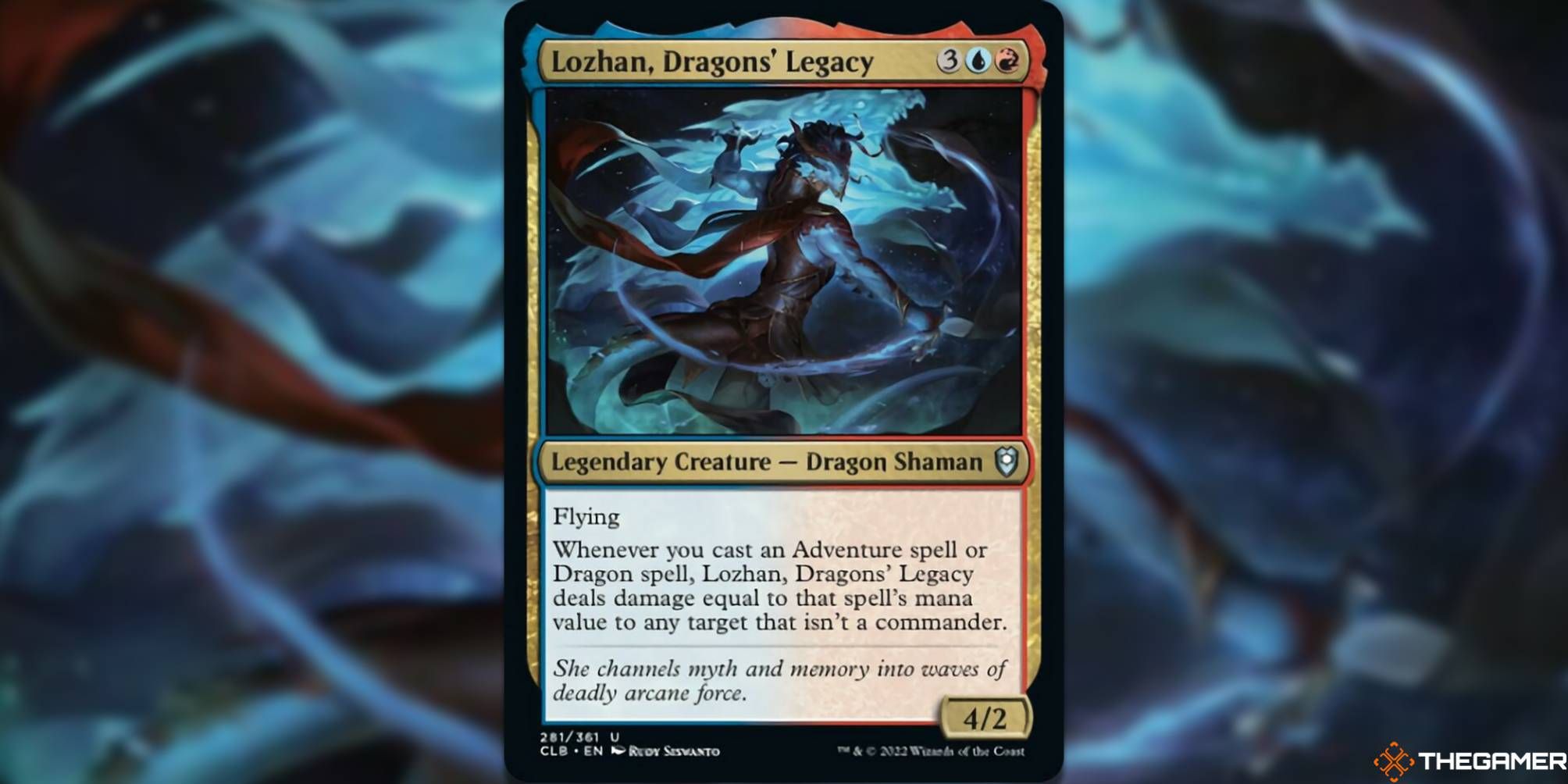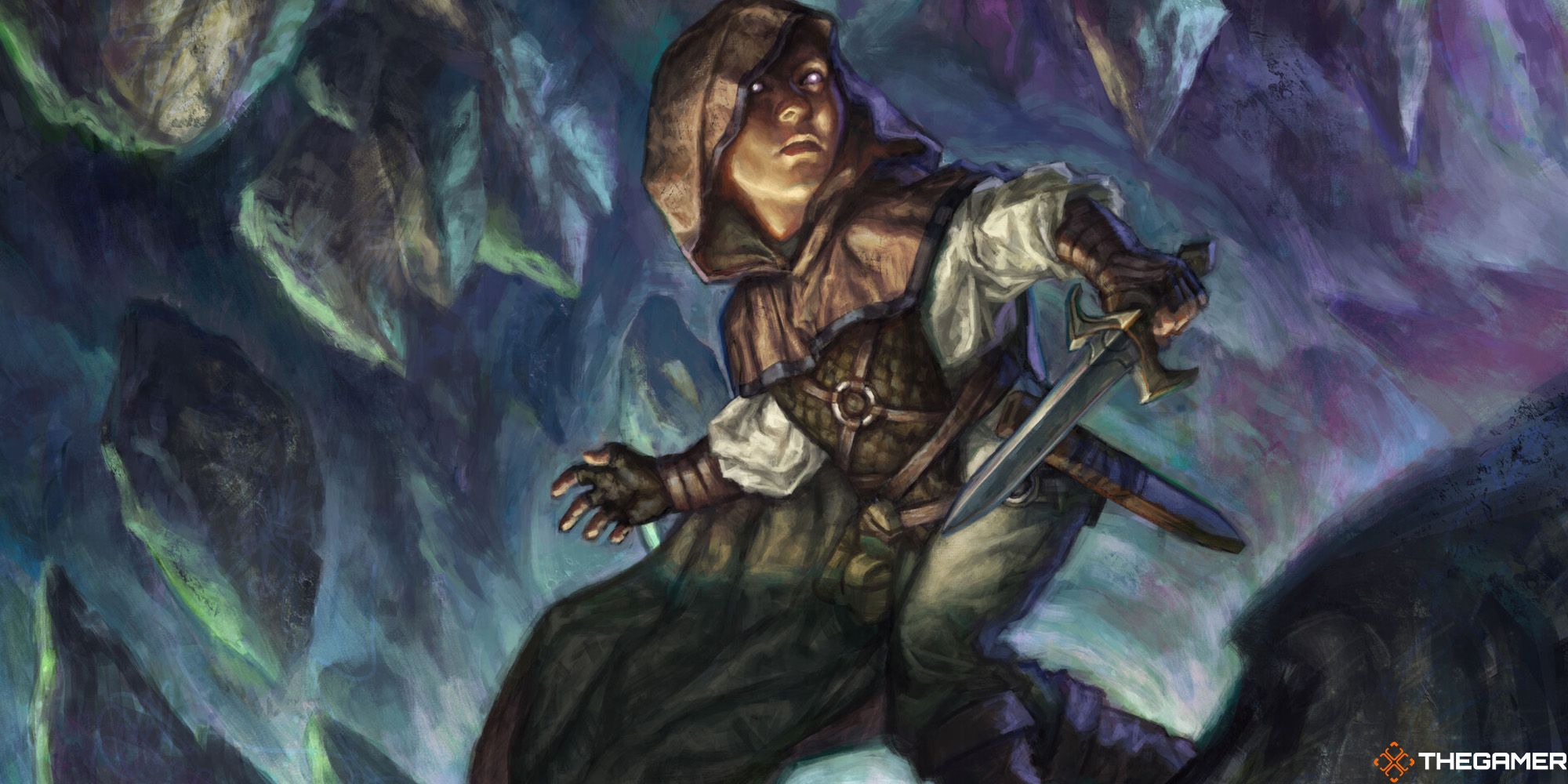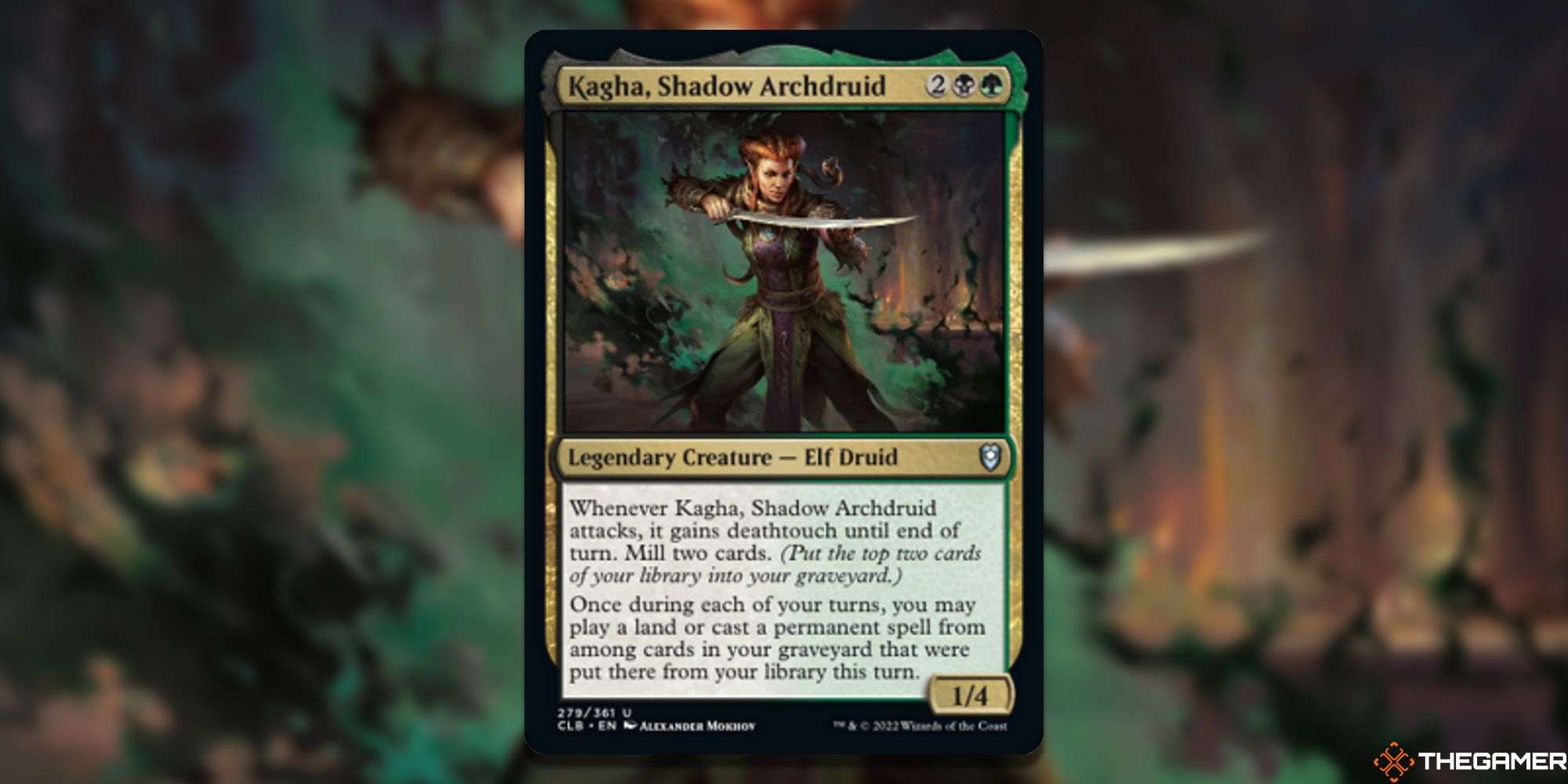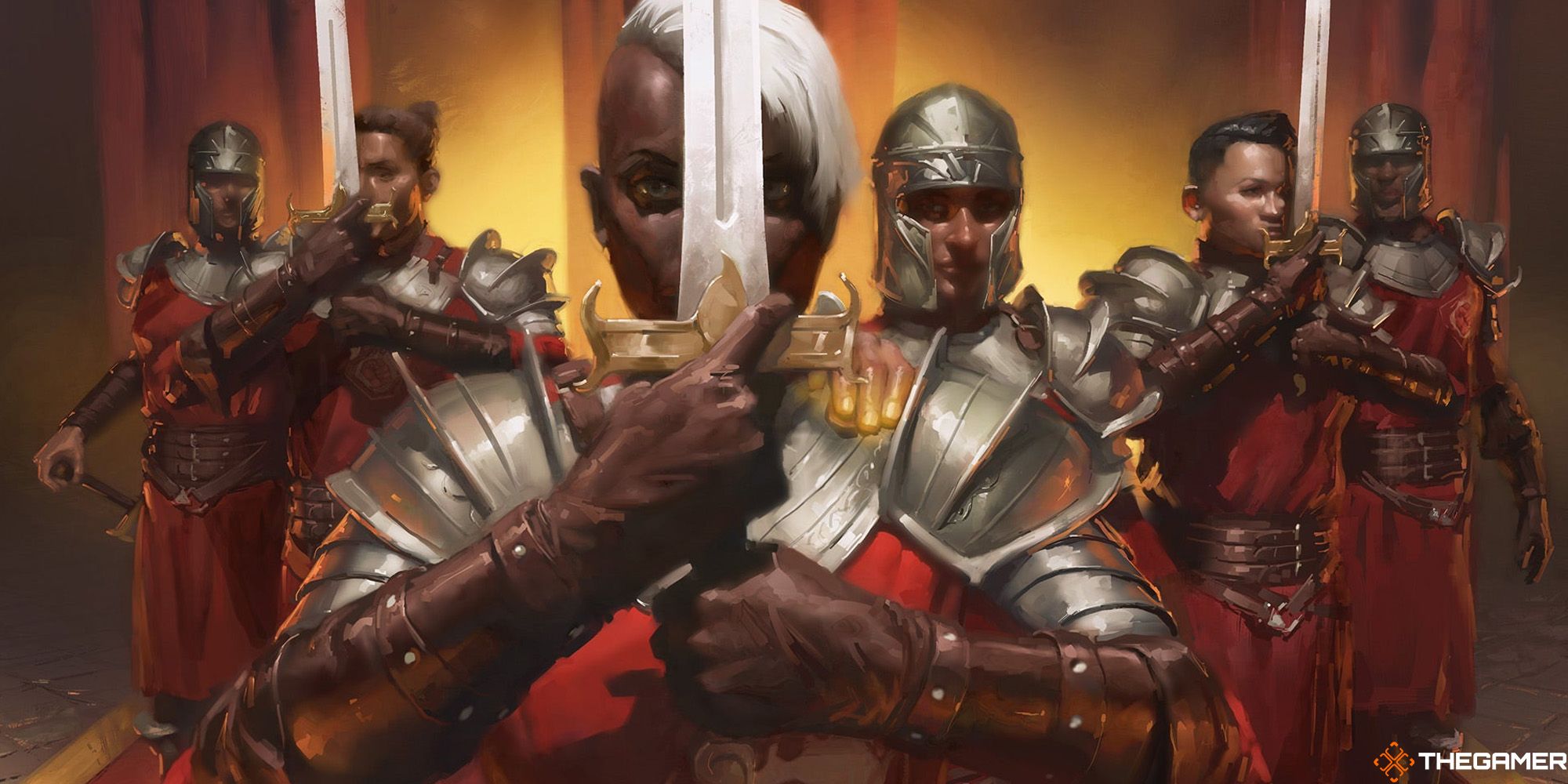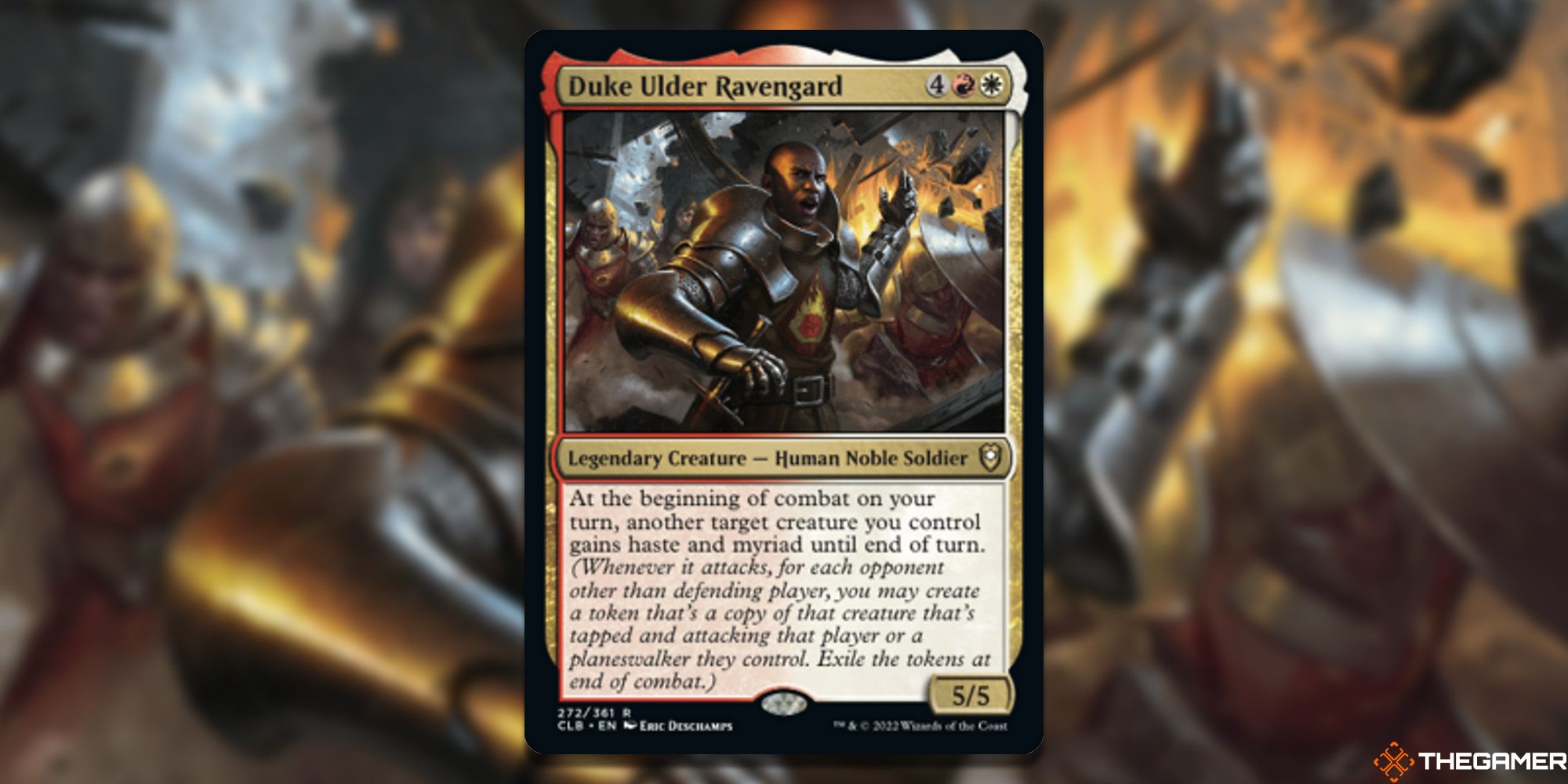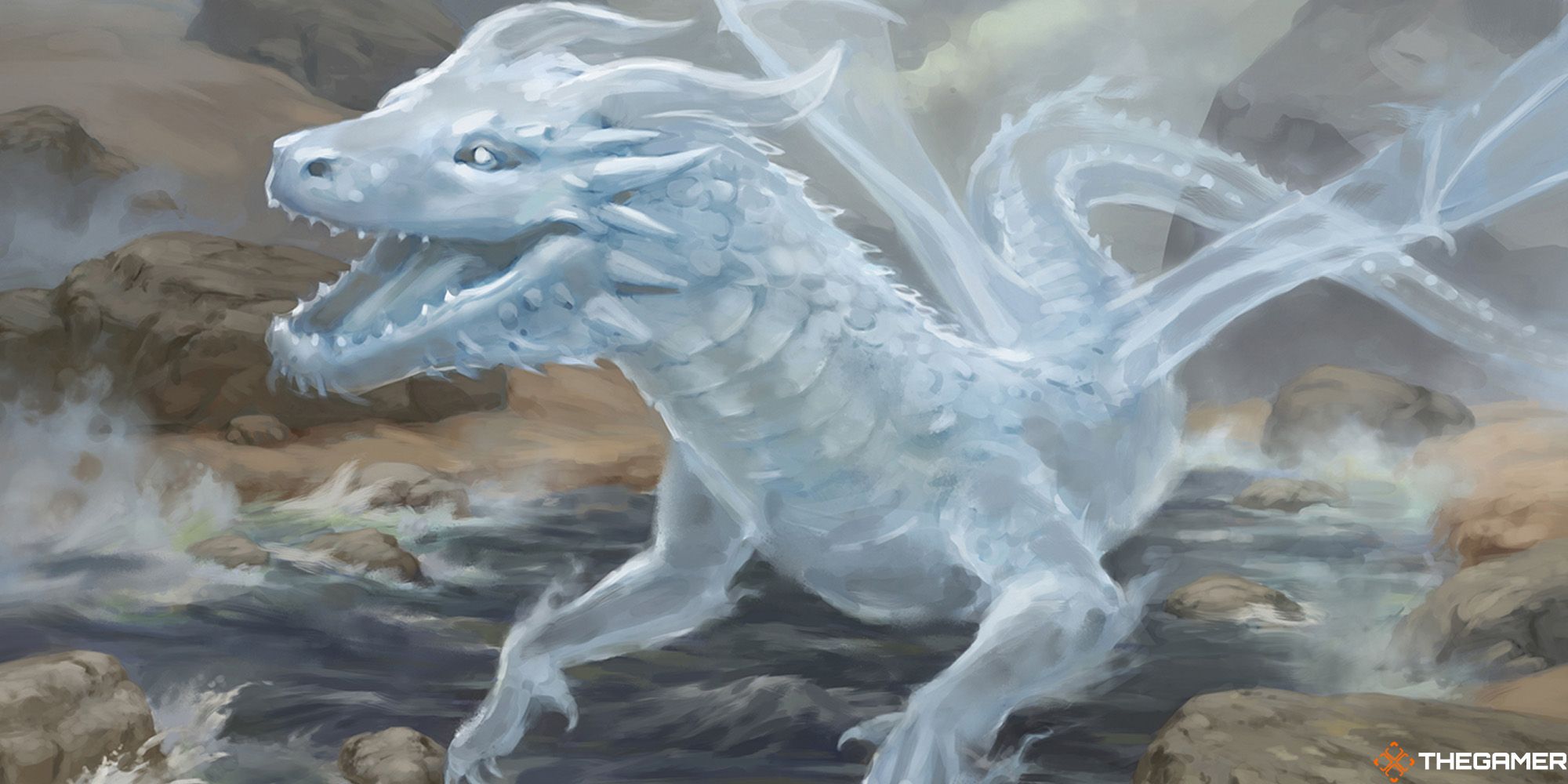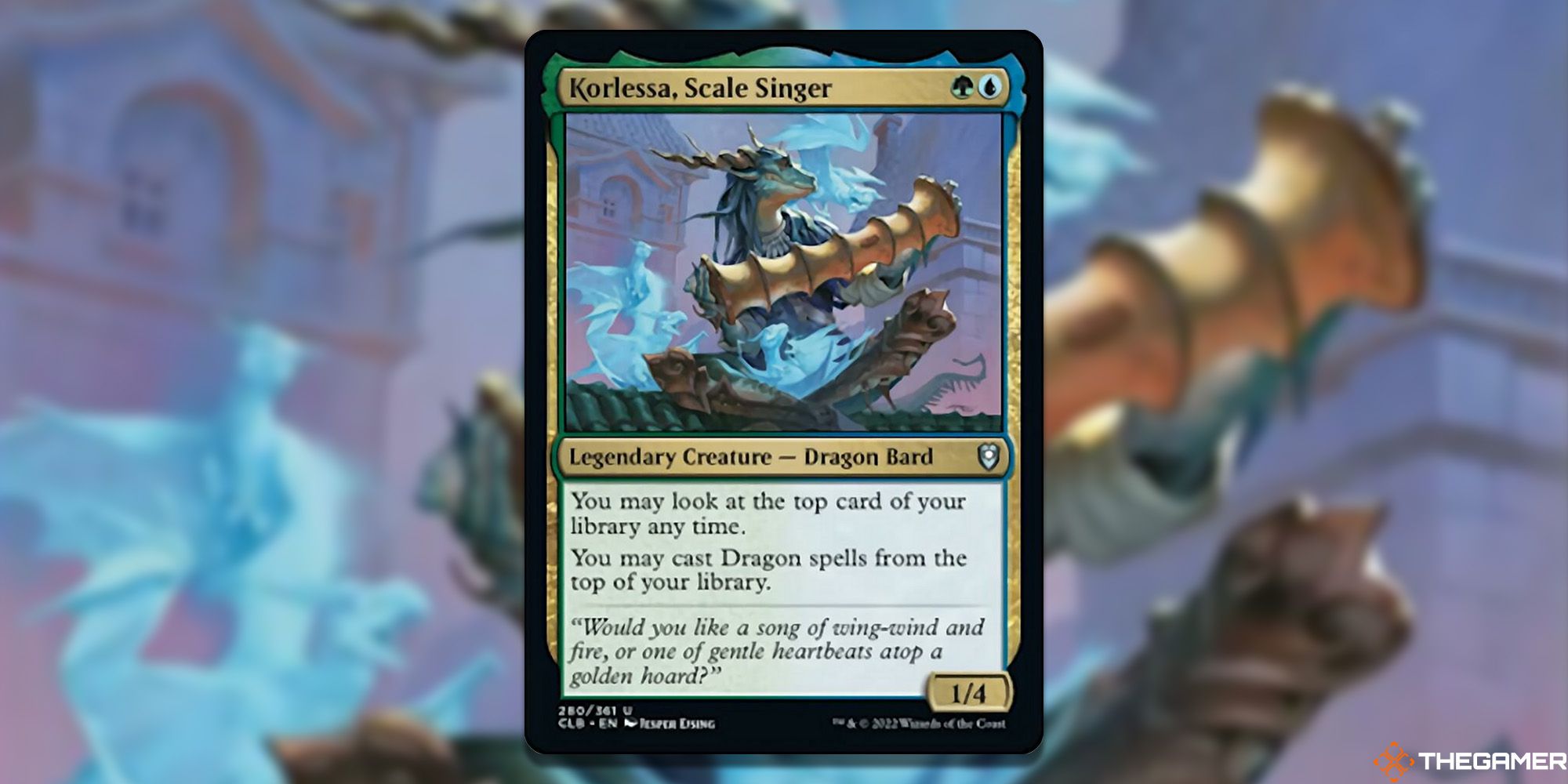Quick Links
Magic: The Gathering’s Commander Legends: Battle for Baldur’s Gate is the game’s second-ever draftable Commander set. Instead of bringing your favourite Commander deck already built, you’re tasked with scraping together one to work with just by opening a few booster packs – it’s still the Commander you know and love, but a very different way of playing.
Drafting is complex at the best of times, but now you also need to pick commanders and adhere to their colour identities. If you’re struggling for where to begin, here are the ten main draft archetypes of Commander Legends: Battle For Baldur’s Gate.
White/Blue: Blink
In Magic, “blinking” (or “flickering”) refers to exiling a permanent, and then returning it to the battlefield. It’s a great way to trigger lots of enter-the-battlefield (ETB) triggers, and by far the best colours for doing it are the Azorius white and blue.
The signpost commander for this archetype is Oji, the Exquisite Blade, who blinks something with the second spell you cast each turn. While you don’t need to play with the signpost commander, they’re a good way to identify the themes you should be aiming at in your colours.
You’ll also want to stock up on powerful ETB effects, like Scouting Hawk for ramp, White Plume Adventurer, Aarakocra Sneak, Windshaper Planetar, and Oceanus Dragon.
Keep an eye out for other blink tools, like the absolute powerhouse that is Displacer Kitten and Lae’Zel’s Acrobatics. There’s also the Background enchantment Far Traveler, which enables your commander to blink a tapped creature every turn. Maybe if you partner it up with a Lulu, Loyal Hollyphant, you can try a monowhite blink deck that untaps all your creatures every turn.
Blue/Black: Initiative
The initiative is a new mechanic introduced in Battle for Baldur’s Gate. Filling the same role as monarch in the original Commander Legends set, initiative allows you to venture through a unique dungeon known as the Undercity every turn – so long as you don’t take combat damage from another player.
This archetype is about taking, keeping, and benefitting from the initiative. For example, its signpost commander Rilsa Rael, Kingpin gives your attacking creatures deathtouch. If you’ve completed a dungeon (such as the Undercity), those creatures also get +5/+0, first strike, and menace until the end of the turn – a terrifying reward for completing a dungeon. There’s also Safana, Calimport Cutthroat, who makes you Treasure tokens if you have the initiative, and three if you’ve completed a dungeon.
Taking the initiative is fairly straightforward for these colours. Rilsa and many other creatures take it when they enter the battlefield, like Aarakocra Sneak, Feywild Caretaker, Ravenloft Adventurer, and Vicious Battlerager. Unfortunately, there aren’t any cards that let you venture into the dungeon (an easy to progress through the Undercity) in this set, and so you’ll need to either keep new ways of taking the initiative coming out, or have methods of protecting yourself long enough to complete the Undercity.
Black/Red: Treasure and Sacrifice
In true Rakdos fashion, this set's black/red archetype is all about sacrificing anything and everything for an advantage. However, it’s also throwing in a Treasure token subtheme to keep things fresh as can be seen in its signpost commander Mahadi, Emporium Master – this cat produces Treasure tokens equal to the number of creatures that died on your turn.
There are loads of ways to sacrifice creatures, and the benefits for doing so can be incredibly powerful. Bloodboil Sorcerer can goad an opponent’s creature, Bonecaller Cleric can return creatures from the graveyard to the battlefield, and Warehouse Thief can exile cards off the top of your library and allow you to cast them. A staple of the current Standard format gets a handy reprint here too, with Deadly Dispute sacrificing a creature or artifact to draw two cards and make a Treasure token.
Also keep an eye out for the Backgrounds Street Urchin, which gives you an instant-speed way to sacrifice creatures and artifacts, and Cultist of the Absolute, which makes your commander super powerful for the low cost of a single sacrifice each turn.
For the Treasure side of the archetype, you’re going to want to make use of cards like Ancient Copper Dragon – who can make an obscene number of Treasures by dealing damage and rolling a d20 – alongside Ingenious Artillerist. Ingenious Artillerist deals damage to each opponent equal to the number of artifacts that enter the battlefield under your control; if you make 20 Tokens from an Ancient Copper Dragon or Mahadi, that is a massive amount of damage being thrown at people’s faces.
Red/Green: Dragons – Power
The first of three different Dragon-centric archetypes in this set is also the simplest: get a lot of Dragons, hit your opponent with them. This is the Gruul archetype, why think when you could turn cards sideways instead?
To this end, the signpost commander for this strategy is Thrakkus the Butcher. Thrakkus doubles the power of all your Dragons whenever he attacks, allowing both him and the rest of your team to hit much harder than they first appear to.
There are also two Backgrounds that fit very nicely into this archetype. The first is Acolyte of Bahamut, which reduces the cost of the first Dragon you cast each turn to ensure you’re pulling them out ahead of your opponents. The second is Dragon Cultist, which makes a 4/4 red Dragon each turn as long as you’ve managed to deal five damage with a single source. Considering all the hefty Dragons in your deck, triggering this should cause no issue.
These colours feature the biggest Dragons in the whole set. From the 5/5 Wrathful Red Dragon (who also lets you throw damage dealt to Dragons right back at any target) and the mana-ramping Ancient Copper Dragon, to massive hitters like the 7/7 Ancient Bronze Dragon and the 10/10 whopper that is the Earthquake Dragon, there are lots of very angry lizards you’ll want to be throwing into your deck.
There is also a new cycle of artifacts debuting in this set that you’ll want to grab. The Carnelian Orb of Dragonkind and the Jade Orb of Dragonkind are red and green mana rocks that tap for mana and give the Dragon you cast with it a bonus. The Carnelian Orb gives them haste, and the Jade Orb gives them a +1/+1 counter with hexproof – on their own, they’re so-so mana rocks, but in a Dragon tribal deck they’ll be deadly.
Green/White: Tokens
Selesnya (green/white) is back to doing what it knows best: producing lots and lots of creature tokens. The strategy is to go wide with lots of small, disposable creatures, and hope you can drown your opponents out under a wall of beasts before they have a chance to mount a decent defence.
The signpost commander for this archetype is Cadira, Caller of the Small. While her ability can spiral out of control in just a matter of turns, on dealing combat damage she produces 1/1 white Rabbit tokens for each other creature token you control.
She’s not the only strong tokens commander in this set, either. Jaheira, Friend of the Forest turns all your creature tokens into mana dorks that can tap for green mana, while Halsin, Emerald Archdruid can transform them into 4/4 Bears at instant speed. Meanwhile in white, Abdel Adrian, Gorion’s Ward can exile your own permanents to produce Soldier tokens – as long as you can find ways to blink or bounce Abdel around, you can easily produce of tokens.
There are tons of great Backgrounds for this archetype as well. Inspiring Leader allows your commander to give all creature tokens +2/+2, Veteran Soldier makes tokens for each opponent whenever your commander attacks, Cloakwood Hermit turns your dying creatures into two 1/1 Squirrels, and Master Chef gives everything that enters a +1/+1 counter.
For the deck itself, watch out for Ancient Gold Dragon, as it can produce up to 20 creature tokens just by attacking. Recruitment Drive, Bramble Sovereign, and You’re Confronted By Robbers are also good ways to make tokens, speeding up your commander even further.
White/Black: Aristocrats
While black/red decks aim to use their permanents as a resource to spend, this archetype instead cares more about the act of them leaving the battlefield. No matter if it’s blink, exile, sacrifice, or destruction, getting as many things as possible off the board to trigger your other pieces is your primary goal.
For instance, the archetype’s signpost commander is Minthara, Merciless Soul. If a permanent you control left the battlefield this turn, you get an experience counter. Minthara’s ward cost, and the buff to power for each creature you control she gives, is dependent on the number of experience counters you have. A handful of other commanders fit nicely into this archetype too, like Viconia, Drow Apostate; Sarevok, Deathbringer; Lulu, Loyal Hollyphant; and the Background Far Traveler.
With so many things leaving the battlefield, you’ll need ways to bring them back for another go. For this, look out for cards like Ghost Lantern, Crystal Dragon, Altar of Bhaal, Ascend From Avernus, and Summon Undead. You could also use blink tools like Lae’Zel’s Acrobatics, as they count as leaving the battlefield while also coming back straight away.
Blue/Red: Dragons – Spells
The second Dragon tribal archetype of the set lies with the Izzet colours of red and blue. This combines Dragons with the tried-and-tested Izzet strategy of spellslinging, and using your Dragons to increase the value of every sell you cast.
For instance, Lozhan, Dragons’ Legacy – the colours’ signpost commander – is a Dragon that deals damage to any non-commander target equal to the mana value of Adventure or Dragon spells you cast. Casting big spells and bigger dragons is the goal with Lozhan, rather than simply smashing your opponents as you would in a red/green deck. There is also Renari, Marchant of Revels; a monoblue commander that can cast artifacts and Dragons as if they had flash, and Livaan, Cultist of Tiamat; which can buff a creature by +X/+0, where X is the mana value of noncreature spells you cast.
As this archetype cares about spells and creatures, the Adventure mechanic plays a big role. Cards like Fang Dragon, Young Red Dragon, Sword Coast Serpent, and Young Blue Dragon all count as creatures and non-creature spells to ensure you’re getting the most value you possibly can from them.
There’s another orb here too, with the Lapis Orb of Dragonkind tapping for blue mana and letting you cry two whenever you cast a Dragon spell. Use this alongside a big draw tool like Ancient Silver Dragon (who draws up to 20 cards whenever it attacks), and you’ll be gaining major card advantage.
Black/Green: Graveyard
Unsurprisingly, the Golgari black and green colours are again going for a graveyard strategy. Unlike sacrifice or Aristocrats, these colours don’t care how things get into the graveyard, as long as they’re there to give you value. For instance, Kagha, Shadow Archdruid uses the graveyard as a way to store spells it can cast that turn, while Viconia, Drow Apostate rewards you having a big graveyard with returning a creature to your hand every turn.
Filling your graveyard is easy, as there are lots of ways to do it in this set. Atrocious Experiment, Circle of the Land Druid, Druidic Ritual, Summon Undead and even Colossal Badger all help set your graveyard up for other effects.
One of the best cards in the entire set is Monster Manual, an artifact that mills cards with its Zoological Study Adventure, before allowing you to put creatures from your hand onto the battlefield with its regular activated ability. As long as you have ways to yank creatures from your graveyard into your hand, this is a great way to cheat those mana costs.
Other commanders you could choose are Sivriss, Nightmare Speaker – who can mill up to three cards by sacrificing a creature – or Erinis, Gloom Stalker. Erinis can return lands to the graveyard from the battlefield whenever they attack, encouraging you to fill your deck full of fetch lands like Evolving Wilds to ensure you have the right colours of land you need to win.
Interestingly, most of the relevant Backgrounds for this archetype are in black. Criminal Past is superb for boosting up your commander by giving them +X/+0 for each creature in your graveyard. Scion of Halaster also replaces your first draw each turn with the chance to put one of the top cards of your library into your graveyard, and then draw a card instead.
Red/White: Myriad
Historically, Boros (red/white) has been a colour pairing all about combat, but Battle for Baldur’s Gate differentiates itself by having a slight twist. Instead of being Voltron, combat tricks, or anything else typically Boros, it uses one of the set’s main returning mechanic: myriad.
Whenever a creature with myriad attacks, you produce a token copy that’s tapped and attacking each other opponent. Instead of going tall with one creature like usual Boros, this time the aim is to spread the damage around by indiscriminately hitting everyone at the same time. Oddly, the signpost commander for this archetype isn’t the uncommon creature. Instead, it’s the rare Duke Ulder Ravengard, who can give any target creature myriad until the end of the turn.
Though there aren’t many Backgrounds directly related to myriad in this set, there is possibly the best enchantment in all of Baldur’s Gate: Legion Loyalty. Legion Loyalty gives all creatures you control myriad, allowing you to swing out with everything, dish out the damage, and rake in the ETB triggers of each token copy that comes into play.
If you can’t get a Legion Loyalty out, don’t worry. There are tons of creatures with myriad, like Battle Angels of Tyr, Tabaxi Toucaneers, Elturel Survivors, Genasi Enforcers, and Tiamat’s Fanatics. You could also incorporate some elements of Aristocrats, as those token copies exile themselves at the end of the turn, which would be excellent for commanders like Lulu, Loyal Hollyphant as a way to untap everything.
Green/Blue: Dragons – Ramp
The final archetype of the set is also the last Dragon-centric one. This time, Dragons are given a Simic (green/blue) twist that emphasises generating as much mana as possible for some colossal plays.
The signpost commander, Korlessa, Scale Singer; doesn’t do much in the way of ramping. Instead, they give you easier access to keep playing Dragons once you’ve built up all the mana you need. You could also use Renari, Merchant of Revels to cast mana rocks and Dragons at instant speed, partnered up with an Acolyte of Bahamut to reduce the cost.
For ramp, you’ll need to use cards like Explore the Underdark, Jaheira’s Respite, Traverse the Outlands Nature’s Lore, and Scaled Nurturer (the latter of which also gives you two life whenever you use it to cast a dragon). Pulling together as much mana is absolutely critical, as without it you won’t be able to flood the board with strong, splashy Dragons any quicker than the other two archetypes.
We’ve already met the Dragons that fit best in this deck elsewhere: Ancient Silver Dragon and Earthquake Dragon being your two big, late-game plays. But you should also keep an eye out for control elements, like Sword Coast Serpent, Sapphire Dragon, Oceanus Dragon, and Juvenile Mist Dragon to keep your opponents on lockdown until you’ve built up the resources needed to close out the game.
Draconic Muralists is also a stunning card here, as it serves as a tutor for any Dragon when it dies. Combine it with a Monster Manual to cheat out those big Dragons and you could be playing way ahead of the rest of the table.

